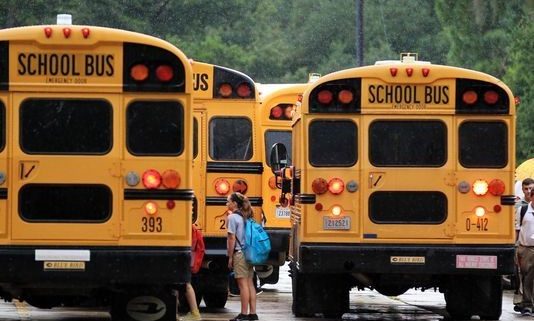Is Your Child’s School Bus Safe?
Each day, school buses across the nation carry more than 25 million students to and from school and activities. The school year has been back in full swing for two months in some places, and many children are spending extra time on school buses for sports and field trips. But, are your children really safe on school buses?
In reality, school bus accidents are rare. According to the National Highway Traffic Safety Administration (NHTSA), 327 children lost their lives in school bus-related accidents between 2004 and 2013. That might seem unacceptably high, but of this number, 147 children were in other vehicles, 125 were pedestrians or cyclists, and 54 were on a school bus. Still, there’s always room for improvement.
Improving Alabama School Bus Safety
Despite the figures that favor the safety of school buses, there are some real concerns. The NHTSA itself believes that there are several ways that schools and school bus companies can improve safety. Their recommendations include:
- Paying extra attention to loading and unloading zones. More school bus-related accidents and injuries occur while buses are loading and unloading children than when they are driving on the road. When drivers fail to see children in a blind spot, in front, or behind the bus, they are more likely to hit or even run over a child, causing serious injury or death.
- Reducing driver distractions. Just as with passenger vehicles, distracted school bus drivers can cause some serious if not deadly accidents. The NHTSA recommends that policies be in place to prohibit such things as texting or interacting with passengers while driving so that buses are as safe as possible. In fact, it is now illegal in the state of Alabama to use a cell phone while driving to send or receive text messages.
- Requiring seatbelt use. Another way to increase the safety of school buses is to have seatbelts on the vehicles and require their use. The NHTSA believes that all school buses should have seatbelts, but the federal governments and most state governments have done little to further these initiatives.
Large school buses around the nation still don’t require safety belts. This is not the case, however, with smaller school buses. According to the NHTSA, the weight of larger school buses provides a measure of safety as a heavier bus will distribute crash forces differently than a passenger vehicle. Smaller school buses, under 10,000 pounds, are different. These need to have safety belts, either lap or shoulder belts, to provide additional crash protection.
Ways to Keep Your Children Safe Around School Buses
School bus companies and school districts must do their part to keep the transportation experience as safe as possible for children. There are also several ways that parents, and even children, can help prevent dangerous school bus accidents. Because most accidents occur outside the bus, here are five safety precautions to keep in mind courtesy of the National Safety Council:
- As the bus is approaching, children should move back from the road to line up.
- Children should not move towards the bus until it has come to a complete stop and the vehicle’s doors have opened.
- When getting off of the bus, children should cross the street at least 10 feet in front of the bus for the most visibility. Have children make eye contact with the bus driver before beginning to cross. Children should still look out for unexpected traffic.
- If a child must cross the street where there is a visual obstruction, such as a parked car, the child should carefully move to where others cars can see them before beginning to cross. Again, children should always look for traffic and look both ways before crossing the road.
- Always stay away from the rear wheels of the bus.
Who is to Blame When a School Bus Accident Occurs?
When a school bus accident does happen, the result can be serious and life-changing. Depending on the situation, the fault could lie with any number of parties. These include:
- The school bus driver
- The school bus company
- The school district
- Another driver
- The bus manufacturer
- A parts manufacturer
- The school bus maintenance company
When there is potentially more than one party at fault in an accident, a case can become complicated. Whatever the cause of a school bus accident, if your child is injured, you may be entitled to compensation for damages.
Contact the Alabama school bus injury attorneys at McPhillips Shinbaum today at 334.262.1911 or online to schedule a free consultation to discuss your case.










